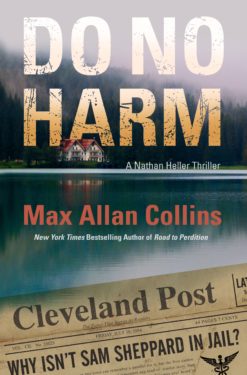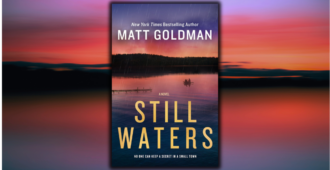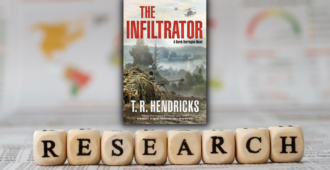By Alison Bunis
In Max Allan Collins’ latest novel, P.I. Nathan Heller takes on the case of Dr. Sam Sheppard, who has been accused of brutally killing his wife Marilyn. If that sounds familiar, there’s a good reason: the Sheppard case was hugely famous in the 1950s. It changed the way we thought about media influence on trials, and it was part of the inspiration for the hit TV show The Fugitive (later remade into the stellar 1993 movie starring Harrison Ford). Marilyn Sheppard’s murder remains one of the great unsolved mysteries of the modern era, and we can’t wait for you to dig into Max Allan Collins’ spin on it when Do No Harm hits shelves on March 10th. But if you can’t wait until then to learn more, here’s a quick look back at the Sheppard case, as well as two other trials that defined the decade.
Who Killed Marilyn?: The Sam Sheppard Trial
When Marilyn Sheppard was brutally murdered in her bedroom July of 1954, investigators immediately zeroed in on her husband Sam as their main suspect. In a trial surrounded by relentless news coverage portraying Sam as a heartless killer, the jury swiftly convicted Sam of murder. Sam and his lawyer worked to have the conviction overturned, arguing that prejudicial publicity before and during the trial had violated Sam’s rights to due process. After having his conviction overturned by one court, then reinstated by another, the Supreme Court ruled in favor of Sam, officially setting him free. Just months later, Sam was retried for Marilyn’s murder, and the new jury found him not guilty. No conclusive evidence was ever really discovered in this case, and while many believe the killer was never discovered, many others believe the only possible murderer was Sam.
The Fight Against Segregation: Brown v. Board of Education:
This famous Supreme Court case from 1954 declared that segregating schools by race was inherently unequal. Though the ruling only applied to schools, it laid the groundwork for the battle to make racial segregation illegal in all walks of life.
Before making it to the Supreme Court, Brown v. Board of Education started off as many smaller cases across the country. Black students and their parents testified to the shockingly poor conditions of blacks-only schools, and trained psychologists testified that segregation in schools “is inevitably interpreted by both white people and Negroes as denoting the inferiority of the Negro group,” leading to an “internalized sense of inferiority” among black students who felt that their efforts to succeed were “doomed to failure.” As one professor from Ohio State put it, “there is a tendency for us to live up to―or perhaps I should say down to―social expectations and to learn what people say we can learn.”
Despite this and other moving testimony, the local cases did not rule in favor of ending school segregation. The NAACP appealed these decisions, and eventually these cases made their way in front of the Supreme Court. Despite internal politics, the Supreme Court issued unanimous ruling on May 17th 1954 declaring that “in the field of public education, the doctrine of ‘separate but equal’ has no place.”
Soviet Spies: The Rosenberg Trial
The trial of married couple Julius and Ethel Rosenberg for espionage took place during the height of McCarthyism. Julius was a longtime supporter of Communism, and the evidence that he’d been spying for the Soviet Union was irrefutable, ranging from eyewitnesses to notes to a Jell-O box that had been cut in half to use as a recognition signal. Evidence against Ethel was limited to testimony from her brother’s wife. Both Rosenberg’s were convicted in 1951, and executed in 1953 after two years of failed appeals. Though even more evidence emerged in the following years that confirmed Julius’s guilt, it came out in 2001 that the testimony against Ethel was false, and that the sister-in-law had only testified against Ethel after significant pressure from the prosecution.
Order Your Copy












